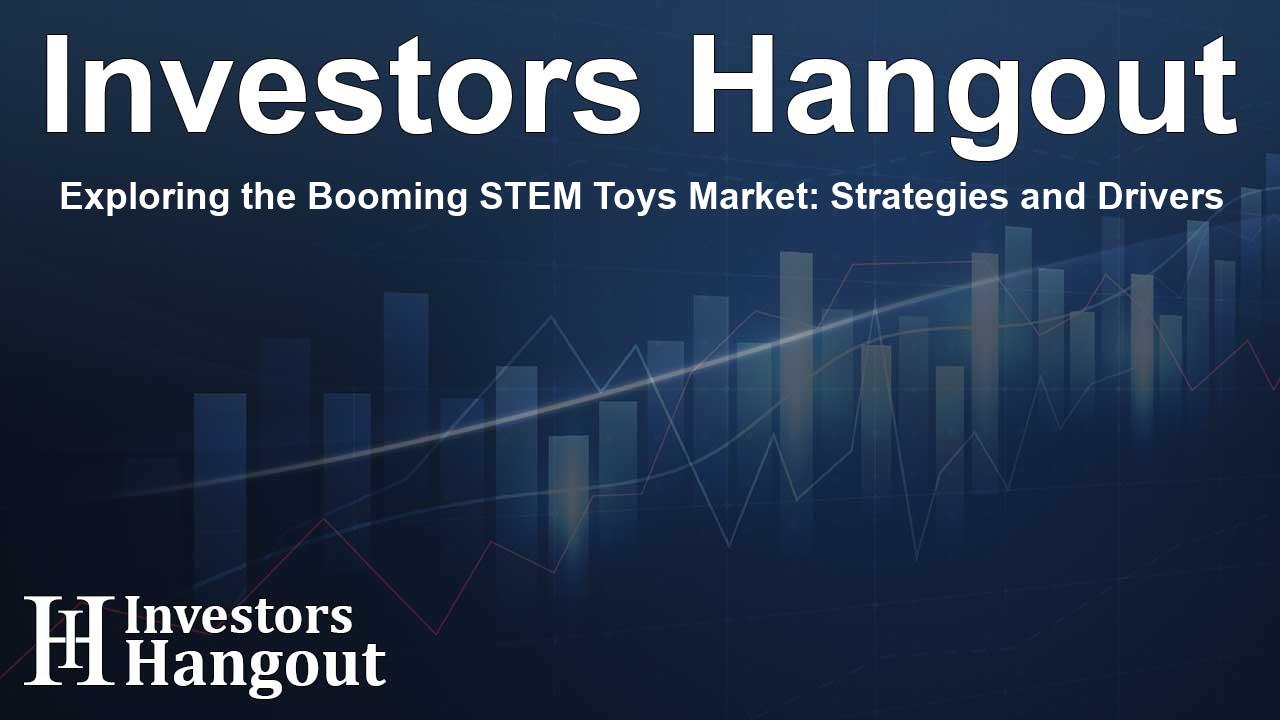Exploring the Booming STEM Toys Market: Strategies and Drivers

Emergence of the STEM Toys Market
The STEM toys market is on an exciting trajectory, projected to grow significantly in the upcoming years. This market is primarily driven by the increasing focus on education in the fields of science, technology, engineering, and mathematics. Parents are more educated and aware of the skills their children need for future success. They are turning towards STEM toys as a unique learning resource that goes beyond traditional play.
Growth Projections and Market Dynamics
According to recent industry assessments, the global STEM toys market is expected to expand by billions, highlighting a compound annual growth rate (CAGR) of nearly 8.89% from 2024 to 2028. This impressive growth stems from a growing demand for educational toys that foster critical thinking and creativity among young learners. Market players are emphasizing innovation, with many incorporating advanced technologies like artificial intelligence (AI) into their products.
Impact of Technology on Educational Toys
AI is revolutionizing how children interact with educational toys. With smart toys that can adapt to each child's unique learning style, children can enjoy personalized experiences while developing essential skills. An example of this innovation is the Cubetto Playset, which not only teaches coding but also adjusts its challenges based on the child’s responses. Such advancements not only enhance engagement but also make learning more effective.
Key Market Trends Driving Demand
Several trends are fueling growth in the STEM toys market. A noticeable shift has been seen due to urbanization, where parents are seeking high-quality toys that provide hands-on learning experiences. Sustainability is also at the forefront, with manufacturers focusing on materials and processes that are environmentally friendly. Distribution channels for these toys range widely from supermarkets and specialty stores to online marketplaces, making them accessible to a broad audience.
Challenges in the STEM Toys Market
Despite the positive growth outlook, the STEM toys market faces challenges, primarily due to the high costs associated with advanced educational toys. Many of these toys require significant investment in technology and materials, which can limit accessibility for some families. For example, a well-designed robotics kit can range from $100 to several hundred dollars. This price barrier can hinder widespread adoption and market penetration.
Market Segmentation Analysis
The STEM toys market can be segmented in various ways to better understand consumer preferences. Key segments include:
- Application: Toys for in-home and school settings.
- Age Group: Toys designed for children aged 6-13.
- Subjects: Focused categories including science, engineering, mathematics, and technology.
- Geographic Reach: Markets are analyzed across regions like APAC, North America, and Europe, with varying growth patterns.
Distribution Channels and Consumer Preferences
Distribution has vastly evolved, with online shopping becoming increasingly preferred. Parents appreciate the convenience of purchasing educational toys online, often seeking detailed insights and reviews. As such, retailers are enhancing their online presence to cater to this trend effectively.
Strategic Insights for Market Players
Key players in the STEM toys market, such as Fat Brain Toys and LEGO, must focus on innovation to stay competitive. Exploring partnerships for collaborative toys, increasing brand visibility, and expanding product lines are vital strategies for success. These companies should prioritize understanding consumer interests, particularly in personal learning experiences and engaging educational content.
Conclusion
The STEM toys market is poised for significant growth as it adapts to the demands of modern education and technology integration. As parents continue to prioritize quality educational experiences for their children, the market's potential remains strong. Navigating challenges and embracing trends will be imperative for market participants aiming to capture the hearts and minds of young learners.
Frequently Asked Questions
What is driving the growth of the STEM toys market?
Growth is primarily driven by the increasing emphasis on science, technology, engineering, and mathematics education among parents and educators.
How has technology, like AI, impacted STEM toys?
AI integration allows toys to adapt to individual learning styles, enhancing engagement and providing personalized educational experiences.
What are some challenges faced by the STEM toys market?
High costs of advanced educational toys remain a significant barrier to broader market adoption among consumers.
How are distribution channels evolving for STEM toys?
Online shopping is increasingly preferred by parents, leading to a shift in how retailers approach marketing and distribution.
Who are the key players in the STEM toys market?
Prominent companies include Fat Brain Toys, LEGO, and Hasbro, among others, that are innovating within this educational segment.
About Investors Hangout
Investors Hangout is a leading online stock forum for financial discussion and learning, offering a wide range of free tools and resources. It draws in traders of all levels, who exchange market knowledge, investigate trading tactics, and keep an eye on industry developments in real time. Featuring financial articles, stock message boards, quotes, charts, company profiles, and live news updates. Through cooperative learning and a wealth of informational resources, it helps users from novices creating their first portfolios to experts honing their techniques. Join Investors Hangout today: https://investorshangout.com/
Disclaimer: The content of this article is solely for general informational purposes only; it does not represent legal, financial, or investment advice. Investors Hangout does not offer financial advice; the author is not a licensed financial advisor. Consult a qualified advisor before making any financial or investment decisions based on this article. The author's interpretation of publicly available data shapes the opinions presented here; as a result, they should not be taken as advice to purchase, sell, or hold any securities mentioned or any other investments. The author does not guarantee the accuracy, completeness, or timeliness of any material, providing it "as is." Information and market conditions may change; past performance is not indicative of future outcomes. If any of the material offered here is inaccurate, please contact us for corrections.